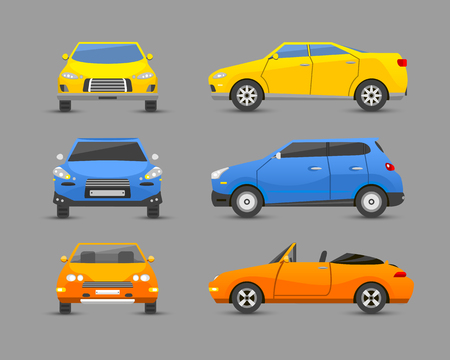1. What Is Uninsured Motorist Coverage?
Uninsured Motorist (UM) coverage is a type of auto insurance that protects you financially if youre involved in an accident caused by a driver who doesn’t have insurance. In the U.S., even though most states require auto insurance, many drivers still hit the road without it. If one of these uninsured drivers crashes into you, UM coverage can help cover your medical expenses and other costs.
How Does UM Coverage Work?
When a driver without insurance causes an accident, they may not have the means to pay for your damages. Without UM coverage, you might have to cover these expenses on your own or take legal action against the driver, which can be time-consuming and costly. With UM coverage, your own insurance steps in to handle the costs, providing you with financial protection.
Types of Uninsured Motorist Coverage
There are generally two main types of uninsured motorist coverage:
| Type of UM Coverage | What It Covers |
|---|---|
| Uninsured Motorist Bodily Injury (UMBI) | Covers medical expenses, lost wages, and pain and suffering for you and your passengers if an uninsured driver is at fault. |
| Uninsured Motorist Property Damage (UMPD) | Pays for repairs to your vehicle if it is damaged by an uninsured driver (not available in all states). |
Why Is UM Coverage Important?
Since there are still many uninsured drivers on the road, having UM coverage can prevent you from paying out-of-pocket expenses after an accident. Without it, you could be left covering costly medical bills and vehicle repairs on your own. Many drivers choose UM coverage for peace of mind, knowing that they’re financially protected even if the other driver isn’t insured.
2. Why Uninsured Motorist Coverage Matters
Many drivers assume that every motorist on the road carries the required insurance, but the reality is far different. According to statistics, a significant percentage of drivers in the U.S. are either uninsured or underinsured. If you get into an accident with one of these drivers, you could be left covering the costs yourself—unless you have uninsured motorist (UM) coverage.
Understanding the Risks of Driving Without Adequate UM Coverage
Without sufficient UM coverage, you take on a serious financial risk every time you hit the road. If an uninsured driver causes an accident, your own insurance may not fully cover your medical expenses, lost wages, or vehicle repairs. Here’s a look at some of the key risks:
- Cost of Medical Expenses: Serious injuries from an accident can lead to expensive hospital bills, surgeries, and ongoing rehabilitation costs.
- Vehicle Repair or Replacement: Without UM coverage, you may have to pay for repairs or even replace your vehicle out of pocket.
- Legal Complexities: Filing a lawsuit against an uninsured driver can be time-consuming and may not result in you recovering any money.
- Lost Wages: If youre injured and cant work, UM coverage can help compensate for your lost income.
The Financial Consequences of an Accident Involving an Uninsured Driver
To understand the potential financial impact of an accident involving an uninsured driver, let’s compare the costs you might face with and without UM coverage:
| Expense Type | With UM Coverage | Without UM Coverage |
|---|---|---|
| Medical Bills | Covered up to policy limits | Paid out of pocket |
| Vehicle Repairs | Covered up to policy limits | Paid out of pocket |
| Lost Wages | Compensated under policy terms | No reimbursement |
| Pain and Suffering | May be covered depending on policy | No compensation |
Real-Life Scenarios Where UM Coverage Saves the Day
Let’s consider a real-world example: Sarah was driving home from work when another driver ran a red light and crashed into her car. The other driver had no insurance, and Sarah suffered a broken arm, requiring surgery and months of physical therapy. Fortunately, her UM coverage paid for all her medical expenses and even helped cover her lost wages while she recovered. Without it, she would have faced tens of thousands of dollars in medical bills on her own.
Conclusion
If you think your current insurance policy is enough to protect you from an uninsured driver, it might be time to reassess. The financial burden of an accident caused by an uninsured motorist can be overwhelming, making UM coverage an essential part of protecting yourself and your finances.

3. How Much Uninsured Motorist Coverage Do You Need?
Choosing the right uninsured motorist (UM) coverage limit is essential to protect yourself financially in case of an accident with an uninsured or underinsured driver. Several factors come into play when determining the appropriate coverage amount. Lets break them down.
State Requirements
Each state has different requirements for uninsured motorist coverage. Some states mandate UM coverage, while others allow drivers to opt out. Here’s a quick look at UM coverage requirements in different states:
| State | Minimum UM Coverage Required | Mandatory or Optional? |
|---|---|---|
| California | $15,000 per person / $30,000 per accident | Optional |
| New York | $25,000 per person / $50,000 per accident | Mandatory |
| Texas | $30,000 per person / $60,000 per accident | Optional |
| Florida | Not required | Optional |
Its important to check your states regulations to understand the minimum coverage required. However, these minimums may not be enough to cover all potential expenses from an accident.
Medical Costs
One of the biggest reasons to consider higher UM coverage limits is the cost of medical care after an accident. Hospital stays, surgeries, rehabilitation, and long-term care can add up quickly. Here’s a rough estimate of potential medical expenses:
- Emergency room visit: $1,500 – $3,000
- Hospital stay (per day): $2,500 – $10,000
- Surgery: $10,000 – $50,000+
- Physical therapy: $100 – $300 per session
Even with health insurance, deductibles and co-pays can create financial stress. UM coverage helps ensure you don’t have to pay out-of-pocket for excessive medical bills caused by an uninsured driver.
Potential Vehicle Damage Expenses
Repairing or replacing your vehicle after a crash can also be expensive. While collision coverage typically helps with vehicle repairs, UM property damage coverage can provide additional protection if the at-fault driver lacks insurance. Consider these average costs:
- Minor repairs (scratches, dents): $500 – $2,500
- Major bodywork: $3,000 – $10,000
- Total vehicle replacement: $20,000 – $50,000+
If you drive a newer or more expensive vehicle, having adequate UM coverage can be crucial in ensuring youre not left covering repair or replacement costs on your own.
Final Thoughts on Choosing the Right Coverage
Determining the right UM coverage limits depends on factors like state requirements, potential medical costs, and vehicle repair expenses. While opting for the minimum might save money on premiums, it could leave you financially vulnerable in the event of an accident. Evaluating your personal situation, budget, and risk tolerance can help you make the best decision for your needs.
4. Comparing Uninsured and Underinsured Motorist Coverage
When selecting auto insurance, you may come across two similar-sounding coverages: uninsured motorist (UM) coverage and underinsured motorist (UIM) coverage. While they may seem alike, they serve slightly different purposes. Understanding the differences between the two can help you determine how much protection you truly need.
What Is Uninsured Motorist Coverage?
Uninsured motorist coverage protects you when youre involved in an accident caused by a driver who does not have any auto insurance. This type of coverage can help pay for your medical expenses, lost wages, and other damages if the at-fault driver cannot cover your costs.
What Is Underinsured Motorist Coverage?
Underinsured motorist (UIM) coverage kicks in when the at-fault driver has insurance, but their policy limits are not high enough to cover all of your damages. If their liability limits are too low to pay for your medical bills, UIM coverage helps bridge the gap.
Key Differences Between UM and UIM Coverage
| Coverage Type | Purpose | When It Applies |
|---|---|---|
| Uninsured Motorist (UM) Coverage | Protects you if the at-fault driver has no insurance | When the other driver is completely uninsured |
| Underinsured Motorist (UIM) Coverage | Helps cover your costs when the at-fault drivers insurance isnt enough | When the other driver’s liability coverage is too low |
Why You Might Need Both Coverages
Its common to assume that drivers follow the law and carry enough insurance, but many don’t. According to the Insurance Information Institute (III), around 1 in 8 drivers in the U.S. are uninsured. In addition, some insured drivers only carry state-minimum limits, which may not be enough to cover medical costs after a serious accident.
Situations Where UM and UIM Coverage Are Essential
- Hit-and-run accidents: If the driver flees the scene and cannot be identified, UM coverage may step in.
- Severe injuries with high medical costs: If the at-fault driver has low liability limits, UIM coverage ensures youre not left paying out of pocket.
- Lost wages: Both UM and UIM coverage can help cover lost income if youre unable to work due to accident-related injuries.
Choosing the Right Coverage Limits
When deciding on coverage limits, consider your health insurance, financial situation, and the likelihood of encountering uninsured drivers in your state. Many experts recommend matching your UM/UIM limits to your liability coverage for adequate protection.
5. Choosing the Right Coverage Limits for Your Needs
Selecting the right uninsured motorist (UM) coverage limits is essential to ensure you have adequate protection in case of an accident with an uninsured or underinsured driver. The right amount depends on your budget, driving habits, and overall financial security. Below are some key factors to consider when determining the best limits for your policy.
Assess Your Financial Situation
Consider your current financial position when choosing UM coverage limits. If you have substantial savings or assets, higher limits can help protect you from financial hardships after an accident. On the other hand, if you are on a tight budget, balancing affordability with sufficient coverage is crucial.
Coverage Limit Recommendations Based on Financial Profile
| Financial Situation | Recommended UM Coverage Limit |
|---|---|
| Limited savings, minimal assets | State minimum or slightly above |
| Moderate savings and assets | $50,000/$100,000 or higher |
| Significant assets and high net worth | $250,000/$500,000 or more |
Consider Your Driving Habits
The amount of time you spend on the road and where you typically drive can affect the level of UM coverage you need. If you frequently drive in high-traffic areas or locations with a high rate of uninsured drivers, having higher coverage limits is a smart choice.
Driving Habit vs. Recommended Coverage
| Driving Habits | Suggested UM Coverage Limits |
|---|---|
| Low mileage, occasional driving | Basic limits |
| Daily commute, city driving | Moderate to high limits |
| Frequent highway travel, ridesharing | Higher coverage limits |
Balancing Coverage and Budget
While you want the best protection possible, its also important to choose limits that fit within your budget. Higher UM limits naturally increase your premium, so finding a balance between affordability and adequate protection is key.
Tips for Finding the Right Balance
- Compare quotes from multiple insurers to find the best rate.
- Consider a higher deductible to reduce premium costs.
- Assess how much coverage you realistically need based on your financial risk.
Final Thoughts on Choosing Coverage Limits
Finding the optimal UM coverage limit requires careful consideration of your financial standing, driving habits, and budget. The right level of protection ensures youre not left financially vulnerable in the event of an accident with an uninsured or underinsured driver. Take the time to evaluate your needs and adjust your policy accordingly to provide the best peace of mind on the road.

